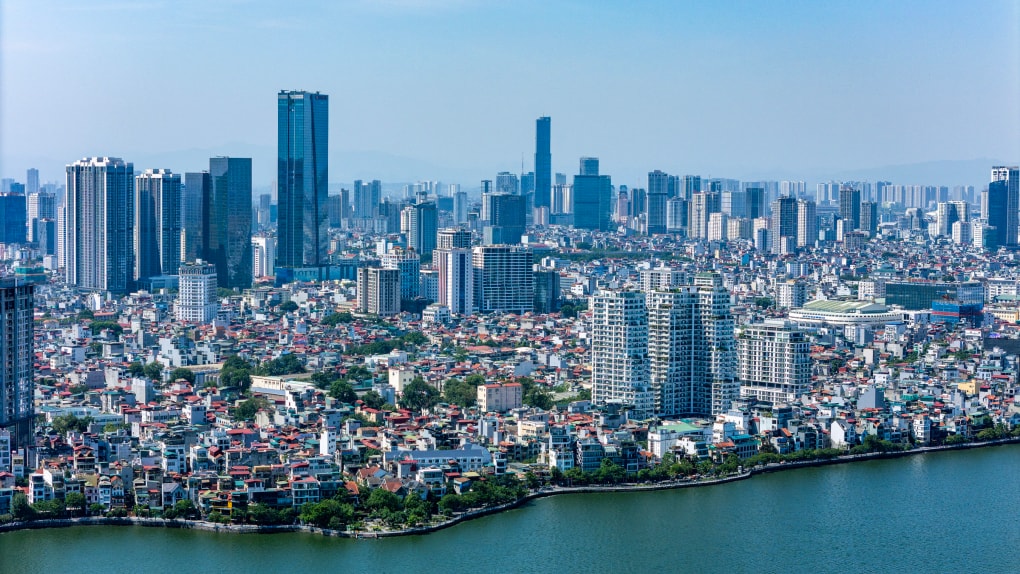Abundant supply, high liquidity, and the Northern wave are factors that will make Hanoi's real estate market continue to lead in the coming years, according to experts from CBRE Vietnam.

At the seminar "Southern real estate overcomes challenges and seizes opportunities" organized by Cafeland on the morning of October 24, Mr. Vo Huynh Tuan Kiet, Director of CBRE Vietnam's housing marketing department, commented that in the coming period, Hanoi will be the main real estate market "surpassing" Ho Chi Minh City.
As evidence for the above argument, Mr. Kiet said that developments in the two largest markets in the country have been clearly different in recent months. While Ho Chi Minh City is still struggling to recover, the heat is leaning towards Hanoi, most specifically expressed in supply, liquidity and price.
Specifically, in the third quarter, the new supply in Hanoi was 8,277 products, Ho Chi Minh City had only 127 products (the lowest in the past decade). From now until 2026, Hanoi is expected to have 38,000 units, while Ho Chi Minh City is only modest with 29,000 units - this market has always been the leader in real estate supply and demand.
Regarding liquidity, in the last quarter alone, Ho Chi Minh City had about 2,000 products absorbed, maintaining a stable level, while Hanoi had a very active purchasing power with absorption equivalent to supply (more than 8,000 units). Hanoi's house prices increased by 16-27%, while Ho Chi Minh City's only increased by 4-8%. Normally, Hanoi's house prices are always lower than Ho Chi Minh City's by about 10-15 million VND per square meter, but now they are almost the same, and are even expected to increase higher in the coming years.
"The long-term outlook for both markets remains positive, but in the short term, Hanoi will remain the main focus of attention," said Mr. Kiet.
Sharing the same view, Dr. Su Ngoc Khuong, Senior Director of Savills Investment Consulting, said that Hanoi is in a strong growth cycle while Ho Chi Minh City is still struggling with the recovery problem.
Not only dominating in terms of supply, an even more important factor according to Mr. Khuong is that Hanoi has a fairly good infrastructure development foundation, diverse land funds and room to expand large urban areas, concentrated in the West and the East. Southern investors are also moving north to find land to develop projects, leading to a large number of real estate investors pouring into this market. This will be the driving force to create huge demand for the Hanoi market in the coming time.
As for Ho Chi Minh City, in terms of housing demand, especially affordable housing, there is still room for development, but the barriers to this market are supply and public investment infrastructure. Recently, the city government has actively removed legal obstacles for many projects, and has also issued an adjusted land price list, helping to speed up the resolution of difficulties for public investment and infrastructure projects, thereby creating the premise for the market to enter a new cycle.
"However, the Ho Chi Minh City market still needs more time, at least 2-3 years, to absorb policy changes, gain momentum to recover and regain its leading position," he said.
Other experts also believe that the advantage of Vietnam's real estate market is still a story of policy safety, with growth of more than 6% over the past 10 years. One point that the market is expecting a lot is that important laws such as the Housing Law, Real Estate Business Law and Land Law will officially take effect soon, expected to help clear up legal bottlenecks that have been pending until now.
From now until the end of the year, the government will continue to perfect the legal framework and guiding documents to soon put real estate-related laws into practice. Although it will take time to penetrate the market, experts see the impact of the laws on market sentiment as very positive.
University (according to VnExpress)